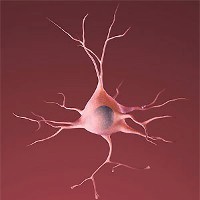26 June 2014. A late-stage clinical trial testing a topical gel to treat diabetic nerve pain completed its enrollment, according to BioDelivery Sciences International in Raleigh, North Carolina, the study’s sponsor. The trial is the first of two clinical studies of Clonidine Topical Gel in preparation for the company’s new drug application with the U.S. Food and Drug Administration.
About half of the 29 million Americans with diabetes suffer from some form of nerve damage, causing numbness and pain most often in the legs and feet. The level of pain for some people can become intense and even disabling. High glucose levels in the blood interfere with the ability of nerves to transmit signals, and can weaken the walls of small blood vessels that supply nerves with oxygen and nutrients.
Clonidine is a drug originally prescribed for high blood pressure, but found additional uses in treating symptoms of neurological disorders, such as attention deficit hyperactivity disorder and Tourette’s syndrome, as well as pain-causing conditions including dysmenorrhea that results in painful menstrual cramps. The company Arcion Therapeutics first developed a topical gel made from clonidine that in initial tests showed it relieves pain by reducing abnormal excitability levels of nerve cell receptors in the skin called nociceptors.
In March 2013, BioDelivery Sciences acquired worldwide rights to commercialize the clonidine gel, which at the time completed an intermediate stage trial of patients suffering from diabetic nerve pain. Among a subset of patients in the trial who had documented functioning nerve receptors, those using the clonidine gel experienced less intense pain over a 3 month period than those taking a placebo. Among diabetic nerve pain patients without functioning nerve receptors, the clonidine gel treatment group also experienced less intense pain, but the differences with the placebo group were not large enough to be statistically reliable.
The new clinical trial enrolled 140 patients at 26 sites in the U.S. with type 1 or 2 diabetes and also suffering from diabetic nerve pain for at least 3 months. Half of the patients selected at random will receive treatments with the Clonidine Topical Gel, while the remaining patients will use a placebo gel with the same look and feel. Only patients with documented functioning nerve receptors are enrolled.
The study team is looking primarily for changes in a reported average pain index at the end of the 12 weeks, compared to the first two weeks of the trial. The patients’ average pain intensity and worst pain intensity are also measured over the trial period.
BioDelivery Sciences anticipates reporting top-line results by the end of 2014. The company says Clonidine Topical Gel also received fast track designation from FDA, which enables the developers to receive early and frequent communication with FDA officials during the review period, often resulting in faster approvals.
Read more:
- Blood Glucose Control Drug Approved for Type 2 Diabetes
- Fox Foundation Proposes Improving Trial Patient Recruitment
- U.S., Europe Pharma Industries Implement Trial Data Sharing
- Many Large Clinical Trials Remain Unpublished
- Trial Shows Glucose-Lowering Drug Effective with Elderly
* * *


 RSS - Posts
RSS - Posts
You must be logged in to post a comment.